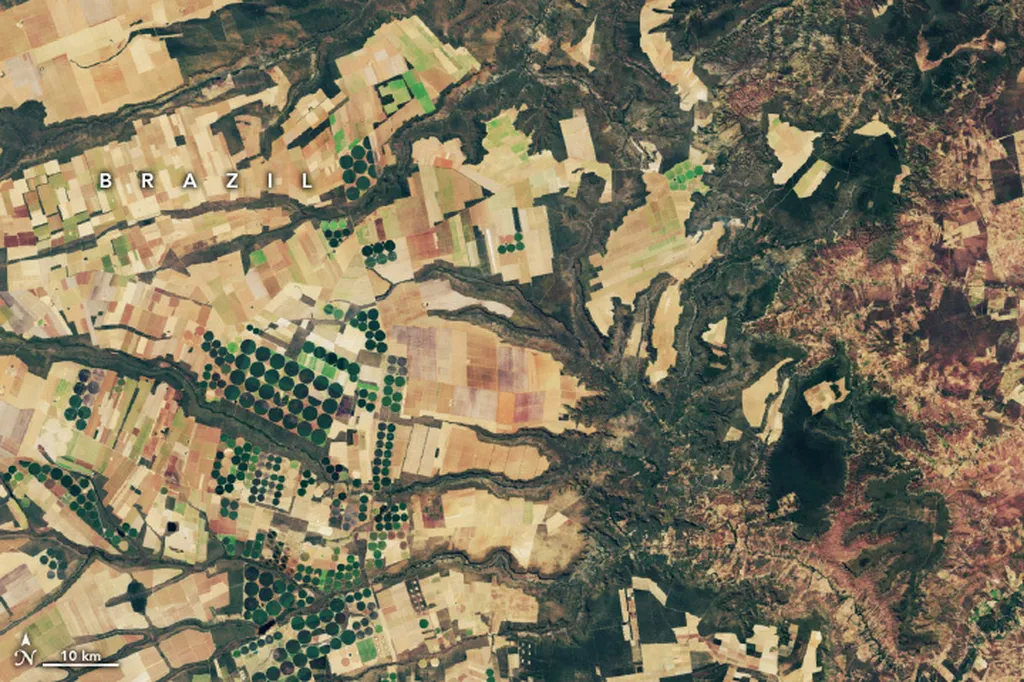In the heart of Brazil’s soybean belt, a groundbreaking study is challenging conventional wisdom about how rainfall variability impacts crop yields, with significant implications for precision agriculture and the broader agricultural sector. Thais Letícia dos Santos, a researcher affiliated with the University of São Paulo, has led a study that quantifies the spatial variability of rainfall and its direct influence on soybean productivity in Piracicaba, São Paulo state. The research, published in *Scientia Agricola* (which translates to *Agricultural Science*), offers a nuanced understanding of how weather patterns can shape agricultural outcomes, potentially revolutionizing farming practices and water management strategies.
Brazil is a global powerhouse in soybean production, but yield gaps persist, often attributed to erratic weather conditions. Dos Santos’ study delves into the intricacies of rainfall variability, using dense networks of rain gauges to gather precise data over two distinct periods: 1993-1994 and 2016-2018. The first campaign utilized ten gauges spread across 1000 hectares, while the second employed nine gauges over a more concentrated 36-hectare area. This meticulous data collection allowed the research team to simulate the impact of rainfall variability on soybean yields using multi-model simulations.
The findings are compelling. “We found that rainfall spatial variability directly influences attainable productivity,” dos Santos explains. “However, the extent of this variability does not directly translate into yield outcomes. The temporal variability, particularly associated with different sowing times, significantly impacts soybean yield.” This insight underscores the importance of considering both spatial and temporal dimensions of rainfall when planning agricultural activities.
The implications for precision agriculture are profound. Farmers and agronomists can leverage this research to optimize sowing dates and water management practices, potentially boosting yields and reducing water waste. “Understanding the spatial and temporal dynamics of rainfall can help farmers make more informed decisions,” dos Santos adds. “This can lead to more efficient use of resources and ultimately, higher productivity.”
For the agricultural sector, this research opens up new avenues for innovation. Precision agriculture technologies, such as drones and satellite imagery, can be enhanced to account for rainfall variability, providing farmers with real-time data to guide their decisions. Water management strategies can also be refined, ensuring that irrigation systems are used more effectively and sustainably.
The study’s findings also have broader commercial impacts. As the agricultural sector continues to grapple with climate change and resource scarcity, the ability to maximize yields while minimizing water usage becomes increasingly critical. Companies investing in precision agriculture technologies stand to benefit from this research, as it provides a scientific foundation for developing more sophisticated tools and strategies.
Looking ahead, this research could shape the future of agriculture in several ways. It highlights the need for more detailed and localized weather data, which could drive the development of new technologies and methodologies. It also underscores the importance of interdisciplinary collaboration, bringing together experts in agronomy, meteorology, and data science to tackle complex agricultural challenges.
In conclusion, Thais Letícia dos Santos’ study published in *Scientia Agricola* offers a fresh perspective on the role of rainfall variability in soybean production. By quantifying the spatial and temporal dimensions of rainfall, the research provides valuable insights for farmers, agronomists, and the broader agricultural sector. As the world seeks to enhance agricultural productivity and sustainability, this study serves as a beacon of innovation and a call to action for further research and development in precision agriculture.

